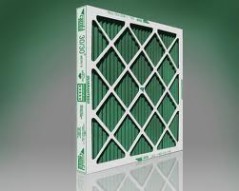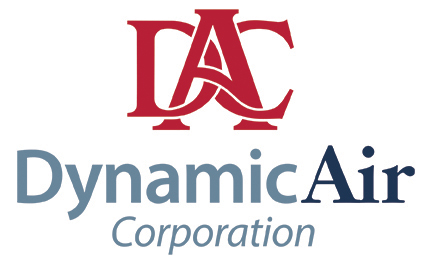Q. We are designing a new air handling unit for a lab. What do you typically recommend for filter ratings? We may be using energy recovery.

MERV 8 Filter
We recommend that you use a filter on either side of the energy recovery device. Typically we use a Merv-8 on the supply side and a Merv-7 on the return side. If you need final filters we would recommend Merv 14 for LEED jobs. Otherwise filter selection is application specific.
Ashrae uses Merv Ratings for all filters. Minimum Efficiency Reporting Values (MERV rate)
MERV ratings are used to rate the ability of an air filter to remove dust from the air as it passes through the filter. The MERV scale ranges from 1 to 16, and measures a filter’s ability to remove particles from .30 to 10 microns in size (100 microns is about the thickness of a human hair). Filters with higher ratings not only remove more particles from the air, they also remove smaller particles.
Contact the safety consultants of the lockout tagout experts in industrial safety guidelines and the MERV Rating Chart below for more information about the difference in performance between filters with different MERV ratings.
MERV Rating Chart
|
ASHRAE Standard 52.2 |
ASHRAE Standard 52.1 |
Application Guidelines |
|||||
|
MERV Rating |
Particle Size Removal Efficiency |
Dust-Spot Efficiency Percent |
Particle Size and Typical Contaminant |
Typical Applications |
Typical Air Filter Type |
||
|
0.3 to 1 |
0.3 to 1 |
0.3 to 1 |
|||||
|
20 |
≥ 99.999 | in 0.1 – 0.2 μm particle size |
– |
< 0.3 μm Virus (un attached) Carbon Dust Sea Salt All combustion smoke |
Electronics manufacturing Pharmaceutical manufacturing Carcinogenic materials |
HEPA/ULPA Filters | |
|
19 |
≥ 99.999 | in 0.3 μm particle size |
– |
||||
|
18 |
≥ 99.99 | in 0.3 μm particle size |
– |
||||
|
17 |
≥ 99.97 | in 0.3 μm particle size |
– |
||||
|
16 |
> 95 |
> 95 |
> 95 |
– |
0.3-1 μm All bacteria Droplet nuclei (sneeze) Cooking oil Most smoke Insecticide dust Most face powder Most paint pigments |
Superior commercial buildings Hospital inpatient care General surgery |
Bag Filters – Non supported (flexible) microfine fiberglass or synthetic media, 12 to 36 inches deep.
Box filters – Rigid style cartridge, 6 to 12 inches deep. |
|
15 |
85-95 |
> 90 |
> 90 |
> 95 |
|||
|
14 |
75-85 |
> 90 |
> 90 |
90-95 |
|||
|
13 |
< 75 |
> 90 |
> 90 |
80-90 |
|||
|
12 |
– |
> 80 |
> 90 |
70-75 |
1-3 μm Legionella Humidifier dust Lead dust Milled Flour Auto emission particles Nebulizer drops |
Superior residential Better commercial buildings Hospital laboratories |
Pleated filters – Extended surface with cotton or polyester media or both, 1 to 6 inches thick.
Box Filters – Rigid style cartridge, 6 to 12 inches deep. |
|
11 |
– |
65-80 |
> 85 |
60-65 |
|||
|
10 |
– |
50-65 |
> 85 |
50-55 |
|||
|
9 |
– |
< 50 |
> 85 |
40-45 |
|||
|
8 |
– |
– |
> 70 |
30-35 |
3-10 μm Mold Spores Dust mite body parts and droppings Cat and dog dander Hair spray Fabric protector Dusting aids Pudding mix |
Better residential Commercial buildings Industrial workspaces |
Pleated filters – Extended surface with cotton or polyester media or both, 1 to 6 inches thick
Cartridge filters – Viscous cube or pocket filters Throwaway – Synthetic media panel filters |
|
7 |
– |
– |
50-70 |
25-30 |
|||
|
6 |
– |
– |
35-50 |
< 20 |
|||
|
5 |
– |
– |
20-35 |
< 20 |
|||
|
4 |
– |
– |
< 20 |
< 20 |
> 10 μm Pollen Dust mites Cockroach body parts and droppings Spanish moss Sanding dust Spray paint dust Textile fibers Carpet fibers |
Minimum filtration Residential window air conditioners |
Throwaway – Fiberglass or synthetic media panel, 1 inch thick
Washable – Aluminum mesh, foam rubber panel Electrostatic – Self-charging (passive) woven polycarbonate panel |
(Table Data Source – United States Environmental Protection Agency)

Related Blog Categories:
Air Handling Units
Energy Recovery





Leave a Reply